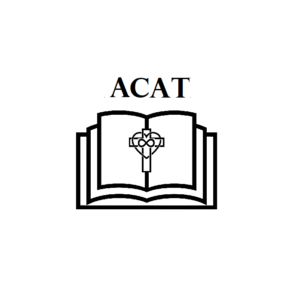Original Sin – Actual Sin – Mortal Sin – Venial Sin
Many people have heard by rote the types of sin “taught” by the Catholic Church. This line of thinking characterizes the Church as a group of elders who gather to define what constitutes naughty behavior, and who further go on to assign spiritual penalties to such transgressions. Such ideas go all the way back to the Middle Ages and beyond, and are about as accurate as thinking the public education system invented the alphabet for the purposes of issuing report cards.
No church or religion invented sin. And, no church or religion “teaches” sin. The Catholic Church ascribes to the idea that there are metaphysical laws which define the universe in which we live, meaning that God created all things and all creatures with its own purpose and design. Humans, as you may recall from previous posts, were created and designed to know God, to love God, to receive God’s love and to live harmoniously with the way in which God imagined all people to express and fulfill their talents. Just as we plan and design our crafts with particular form and function, so too does God create people with intentional design. The intended form and function of something can be said to be the laws under which that “something” operates. An automobile has form and function which can vary from car to car but must have certain basic principles met before it is a “good” automobile. In other words, if a piece of machinery follows the “laws” which makes something an “automobile,” it functions well. If not, it falters, or fails, or functions as something that does not qualify as an automobile.
The same phrasing can describe humanity. The “laws” which make something “human” are how well we know God, love God, receive God’s love and respond to God’s intended design.
Sin is the consequence of not following the law… that is, not following God’s intended design.
Thus: Nobody can “invent” sin. Sin is a state of misalignment.
With that in mind, let us see now the two ways that misalignment occurs:
- ORIGINAL SIN: The inherited misalignment that originated with Adam and Eve, the first two humans, whose very makeup was altered by their choice to see and know evil;
- ACTUAL SIN: The choices people make which go against God’s intended design.
The phrase “original sin” is meant to signify that we begin our earthly lives in misalignment, since God’s intended design for humanity was not to know evil. Yet, once our ancestors chose to do so, it could not be un-seen. Our lenses no longer pointed solely at God. Think of it as someone altering the process before it even begins, such that everything coming out has this design flaw, and our minds now have a sharp focus on, and skew toward, things that divide and destroy relationships (since that is, in essence, what evil is – the destruction of our relationship with God).
NOTE!
“Original sin” does NOT mean that God created damaged goods, or that people are set up to fail from birth. In fact, God provided a correction – a “patch,” if you will – for original sin, and that is baptism. (We will discuss baptism in greater detail in future posts.)
Another note!
Humans have free will, free choice, and are never coerced or manipulated by God or His Church into doing anything. If one finds an example of coercion, it is not authentically of God. Period.
“Actual Sin,” then, is the term used to describe those times when we choose something that is not part of God’s intended design. As one can imagine, there are degrees of sin which range from accidental to carefully calculated. The bottom line is, all sin is a deviation from God’s intended design (or, in metaphysical terms, a violation of natural law).
With such a range of degree of sin, can we expect that sin’s consequences are equally variable?
NO.
Earthly, material consequences are variable. Spiritual consequences are not. The consequence of every sin is a break in our relationship with God. Sin disrupts our act of loving God and our ability to receive God’s love. Each and every time.

